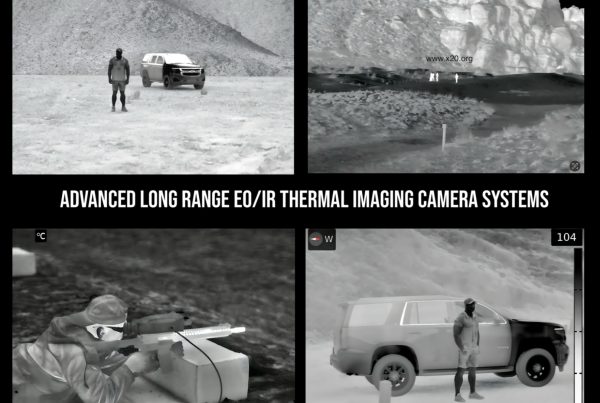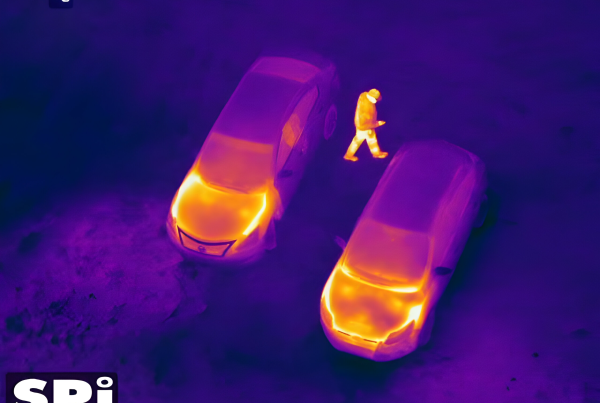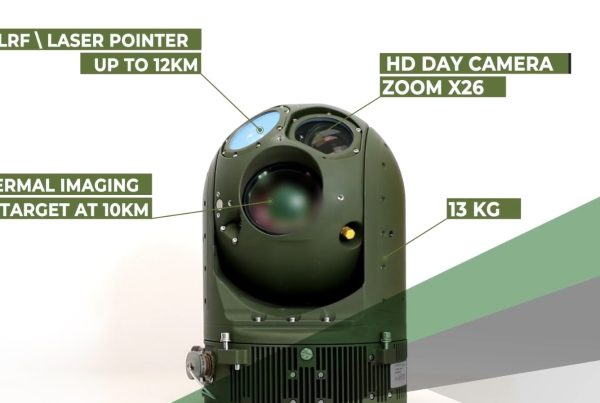Scope truck Flir Tactical day/night rapid deployment ISR multi sensor
security camera system
Developed to meet the increasing demand for flexible surveillance, the M4 allows for rapid setup of a surveillance position even in remote locations. The M4 consists of a Pelican watertight, dustproof and crushproof carry case containing a tripod, an ultra sensitive thermal imaging PTZ camera, an HD BSI CMOS VIS/NIR LLL zoom EO camera and a laptop or GTAC depending on the mission needs.
Custom sensor integration available upon request
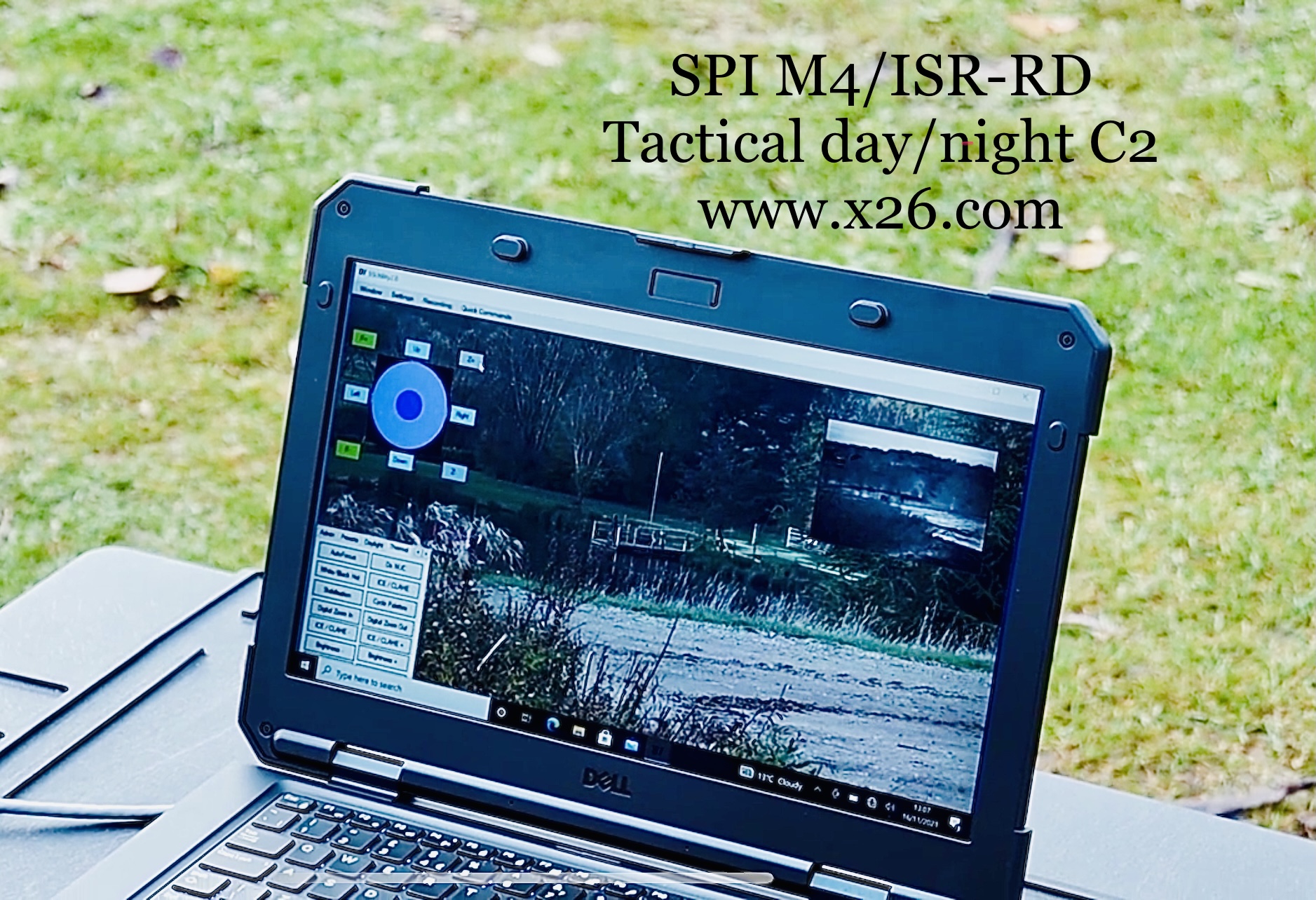
The Kit takes about 10 minutes to set up and runs off of 5590-type NATO standard hot-swappable batteries, the thermal IR camera can provide uninterrupted surveillance for up to 30 hours, or indefinitely, when connected to an external power source such as AC 110-220 or DC from a vehicle.
AVAILABLE WITH OUR LONG RANGE 10 KILOMETER
ZOOM 350MM MWIR SENSOR OPTION
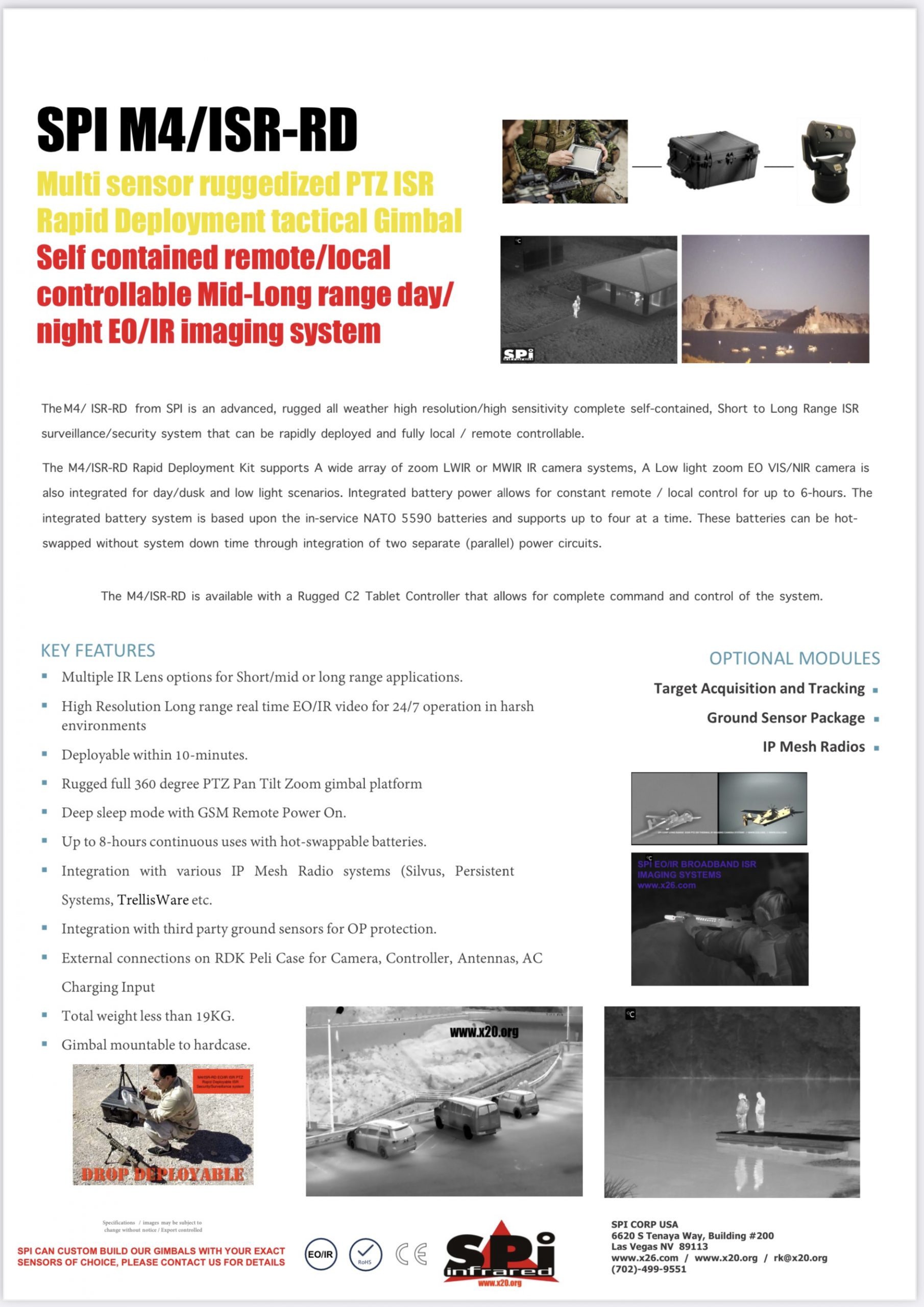
The M4 weighs approximately 20kg (depending on the camera model) which means that the contents of the lightweight and durable carry case can be split between two individuals and carried to otherwise inaccessible locations, making it ideally suited to special operations, law enforcement, military, security and surveillance applications.
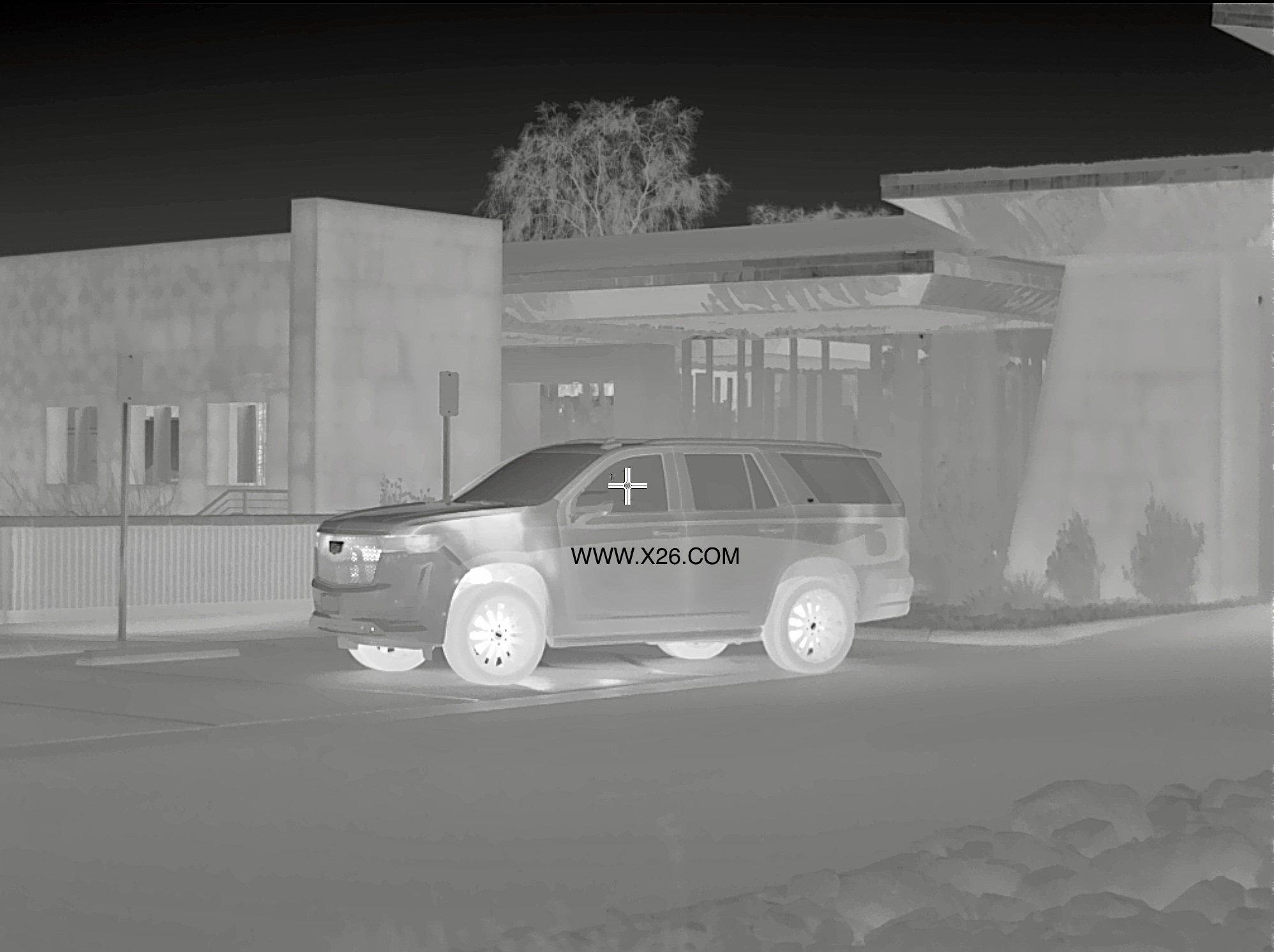 Once deployed, the M4 can also be connected with a mesh radio to create an arrayed network of systems capable of providing surveillance and threat detection over a wide area. The M4’s durability and the PTZ’s precision means it is well-suited to the most challenging of applications, such as maritime, border security and vehicle-mounted installations, and can be quickly configured accordingly.
Once deployed, the M4 can also be connected with a mesh radio to create an arrayed network of systems capable of providing surveillance and threat detection over a wide area. The M4’s durability and the PTZ’s precision means it is well-suited to the most challenging of applications, such as maritime, border security and vehicle-mounted installations, and can be quickly configured accordingly.
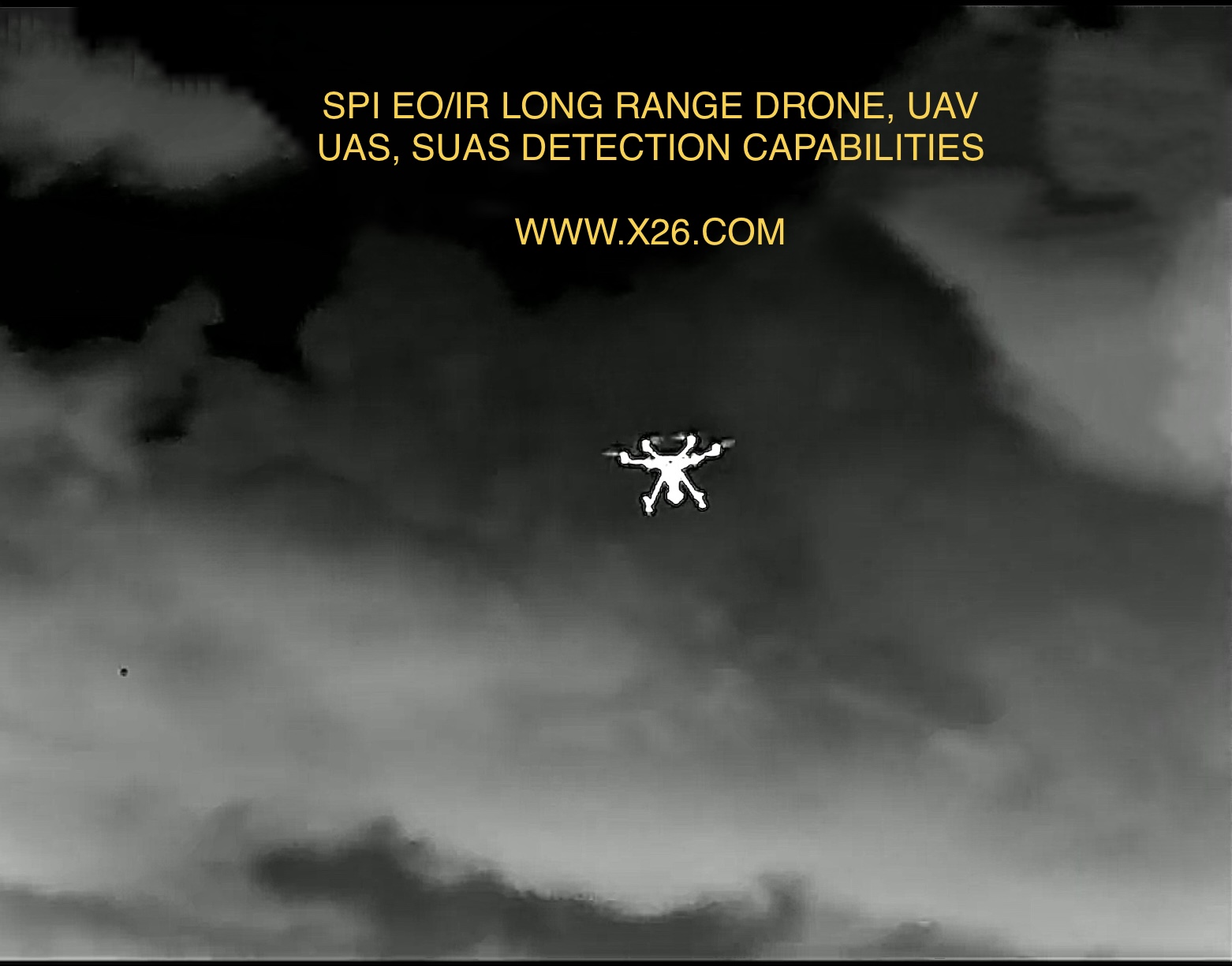
Long range thermal imaging eoir drone uav uas suas detection countermeasures IR
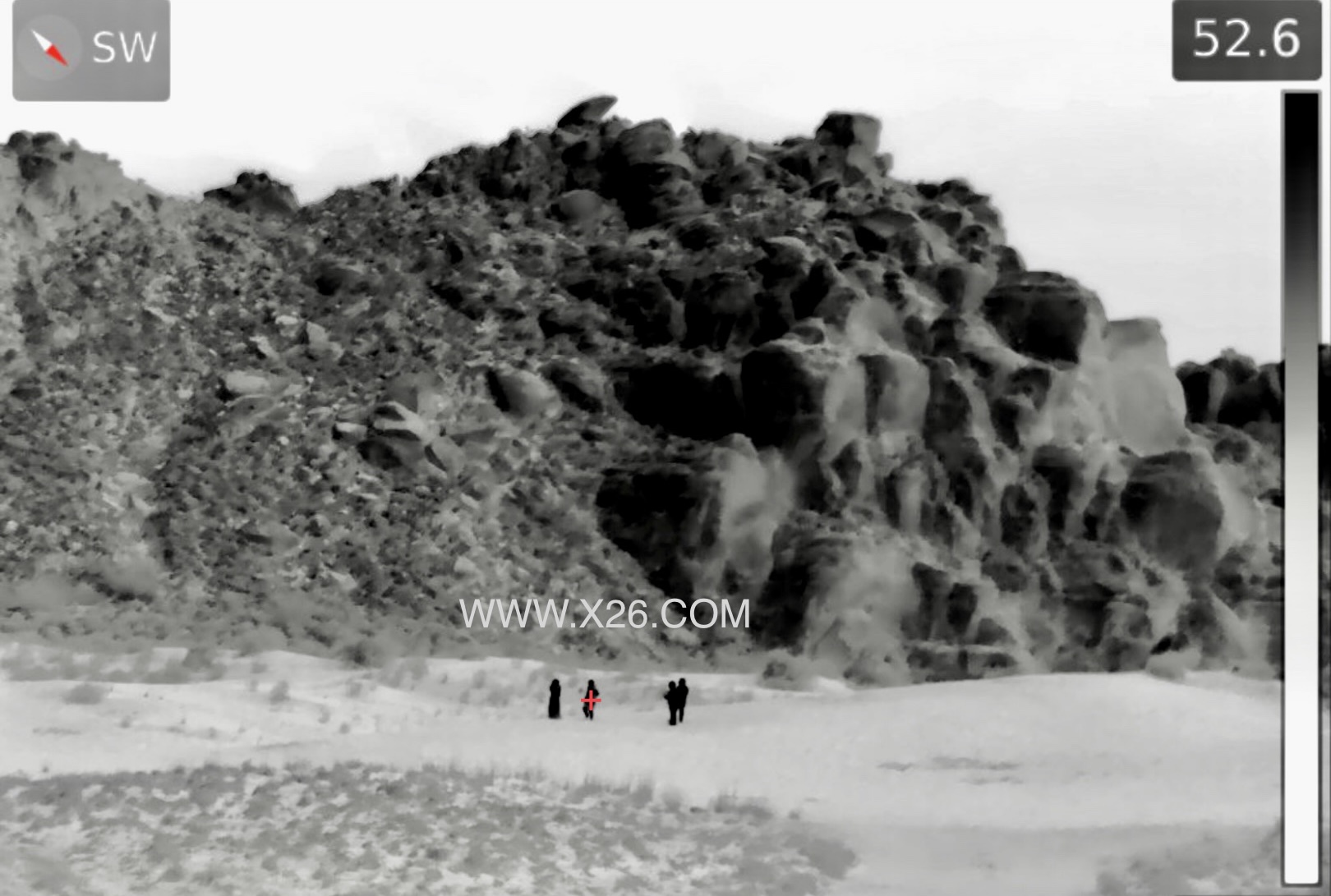
If required, the M4 can be upgraded to include a complete Over The Horizon (OTH) capability including remote power control and camera streaming.
The M4 system is easy to learn, operate and setup.
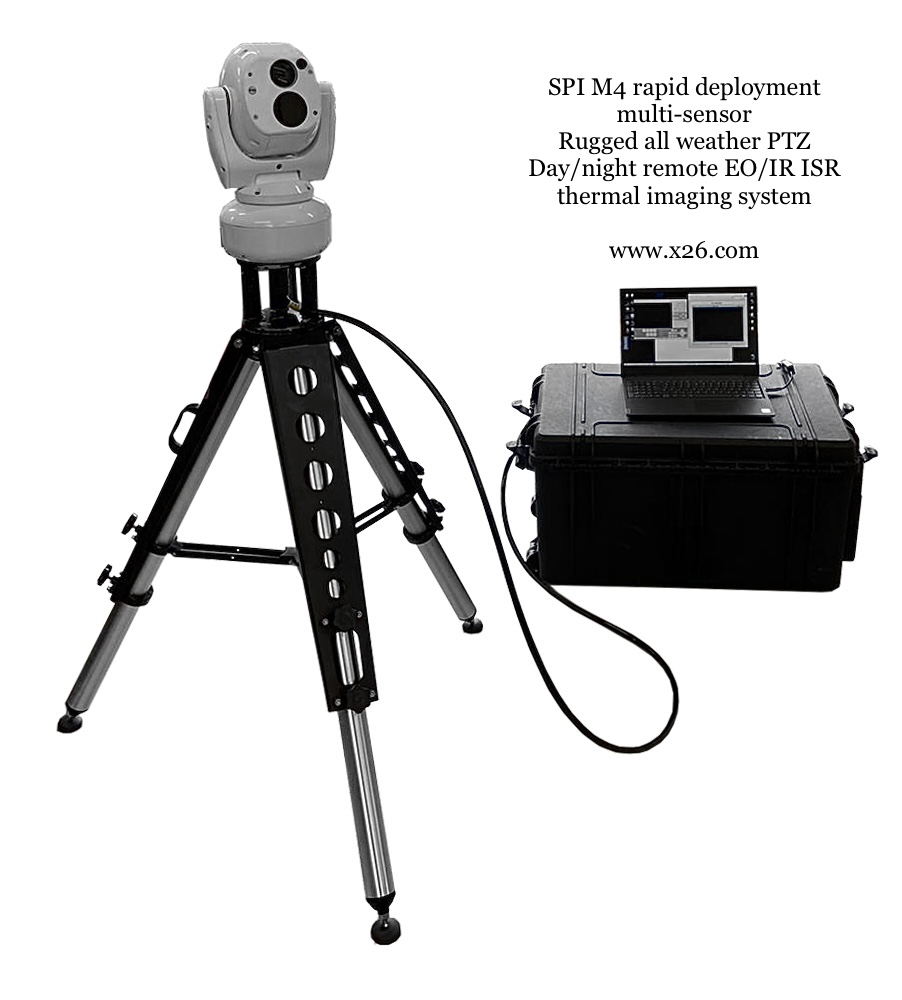
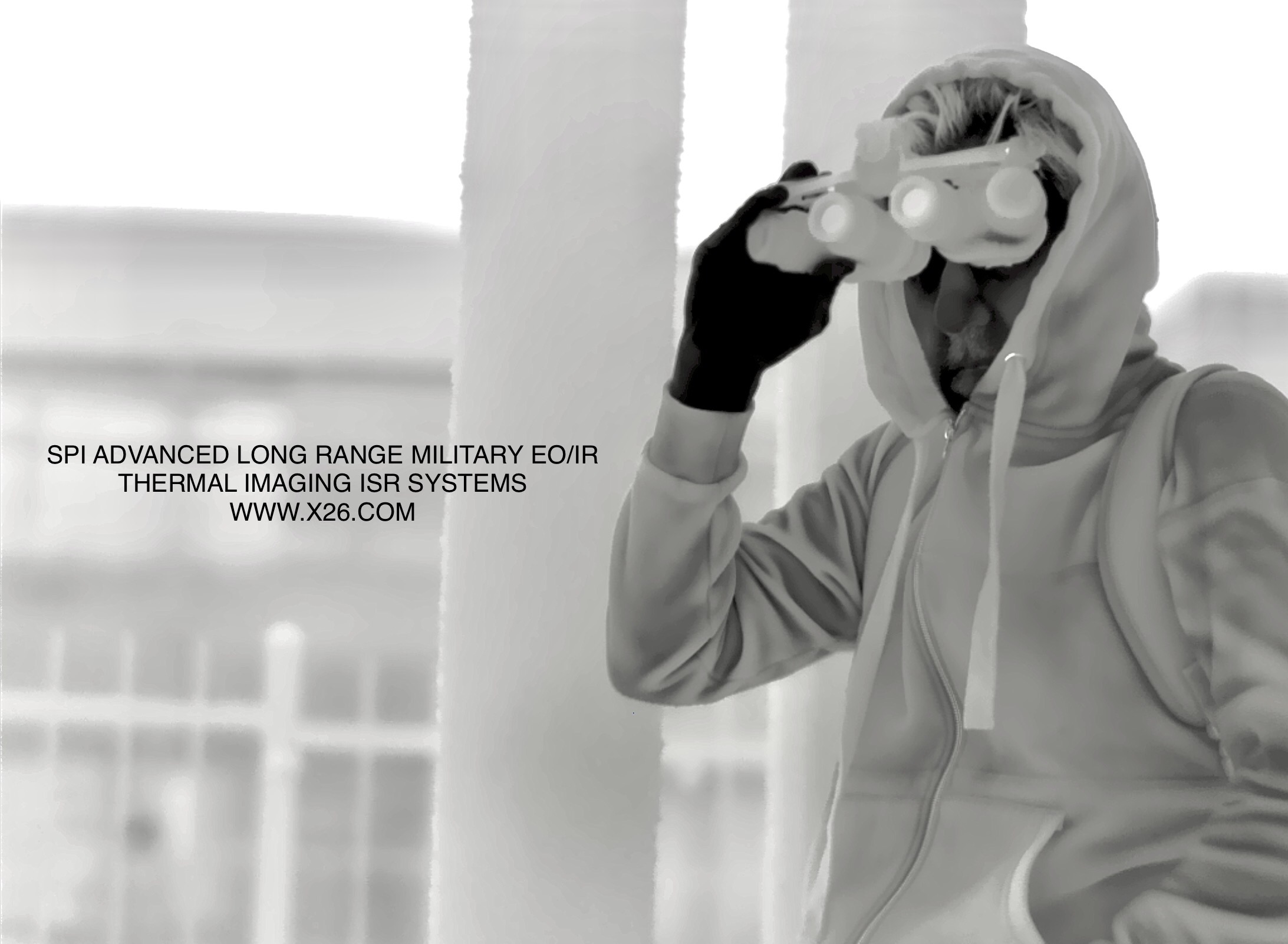
The advanced thermal Imaging camera and HD VIS/NIR sensors are sealed within a compact, hard anodized ruggedized IP67 all weather housing. The system can operate uninterrupted in the harshest environments. This means that the M4 can be deployed in any climate (capable of operating within a temperature range of -30°C to 65°C).
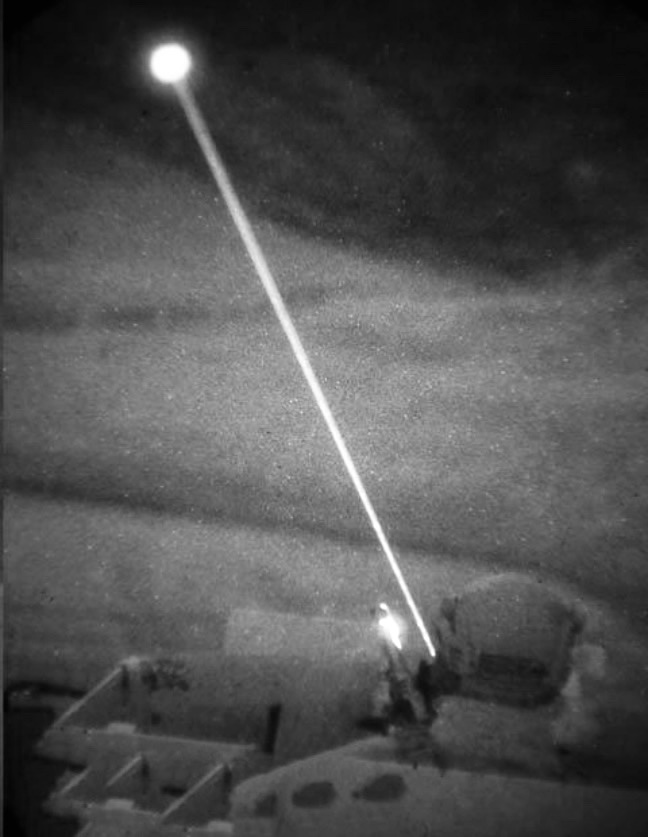
Overview
SPI has a broad experience with Homeland Security projects and markets a wide variety of thermal imaging cameras for this application. Multi-Sensor Systems are also available. We work with you our customer to design the perfect thermal imaging solution but the camera is a part of the package, the entire network is established for local or remote observation and controlling of the systems. SPI Works with end users, integrators and consultants to meet mission requirements. The Reliability of the gimbal endlong with the entire system have to be able to withstand extreme weather and harsh environments, our ptz gimbal platforms are the absolute most ruggedized and reliable systems available today with 100% duty cycle, weapons grade shock resistant stabilizers and nitrogen purging.
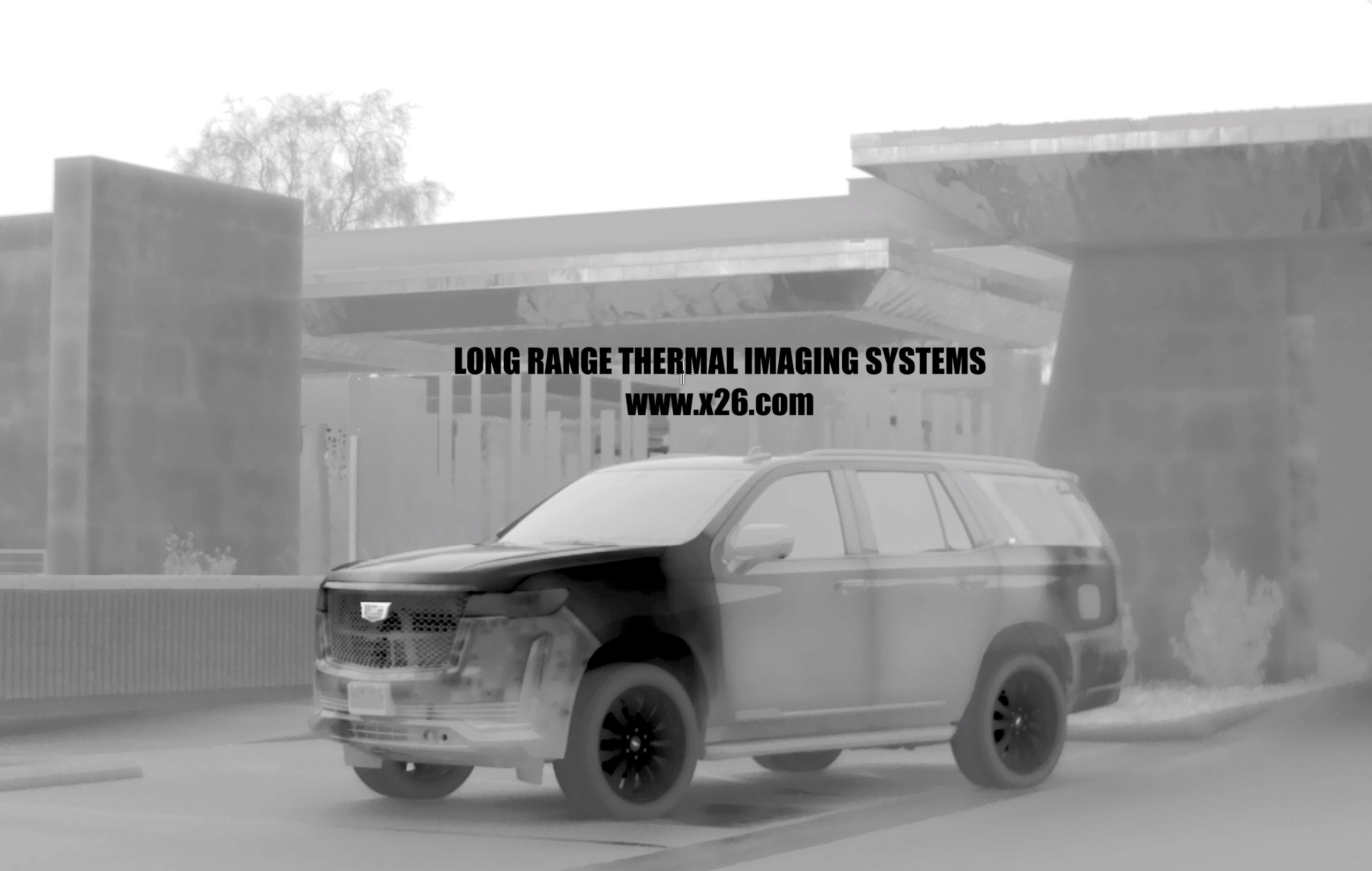
Our long range flir PTZ thermal cameras are robust, All weather, heavy duty PTZ (Pan Tilt Zoom) positioners/Gimbals that rotate continuously 360 degrees and Pan/Tilt up and down allowing the user to guide and control the motors and position the long range flir cameras and associated sensors to the position of interest. The long range flir PTZ thermal Security cameras can be gyro-stabilized which reduces the shake and jitter from the imagery especially when zoomed in to maximum telephoto ranges. Our long range flir PTZ thermal Security cameras Have the ability of reaching out and detecting threats up to 50 kilometers. All of our flir PTZ thermal camera come with a complimentary long range zoom daytime EO CMOS low light camera Which make these systems a true complete day and night imaging system. Additional sensors can be added onto our long range flir PTZ thermal cameras such as SWIR (Short Wave Infrared) cameras, Laser rangefinders (LRF), tracking, radar with slew to cue capabilities, GPS, Compass, Laser dazzlers, microphones, spotlights, loudspeakers, laser infrared Illuminators, laser infrared pointers, and high speed cameras. We custom build our long range flir PTZ thermal camera and can incorporate most any add on option you can imagine into our gimbal platforms. Our thermal cameras offer the user crisp, clear image quality with outstanding detail, clarity and fidelity. Long range infrared cameras come in both Cooled MWIR and LWIR uncooled flavors in both HD (High Definition) and SD VGA (Standard definition) which is typically 640×480 or 640×512 Pixel resolution. Our long range thermal imaging flir camera systems are mounted in harsh environments and used for Border patrol and protection, coastline and shoreline installations, range, airports, forward Operation and observation bases (FOB), runways, critical infrastructures, high value asset protection and anywhere where long range 24/7 day and night vision imaging is critical to secure and protect a specific area. Our long range flir PTZ thermal cameras are easily mounted in multiple configurations like on roof mounted, car, Truck, mobile command vehicles, security vehicle and mobile applications. In marine vessels, our long range flir ptz thermal cameras Are mounted to boats, yachts and cruise ships. Other mounting provisions are portable trailers, telescoping masts, poles, tripods, pendant, buildings and fixed mounts. SPI uses the best, most reliable and longest lasting coolers in the midwave MWIR long range thermal camera systems which is a critical factor in the procurement of long range flir cameras. Having a reliable cooler ensures years of continuous maintenance free operation from the MWIR camera. We source the best Cooled Camera system made up of indium antimonide InSb, HOT MCT Mercury Cadmium Telluride and SLS types with micro pitches as small as 10 µm.
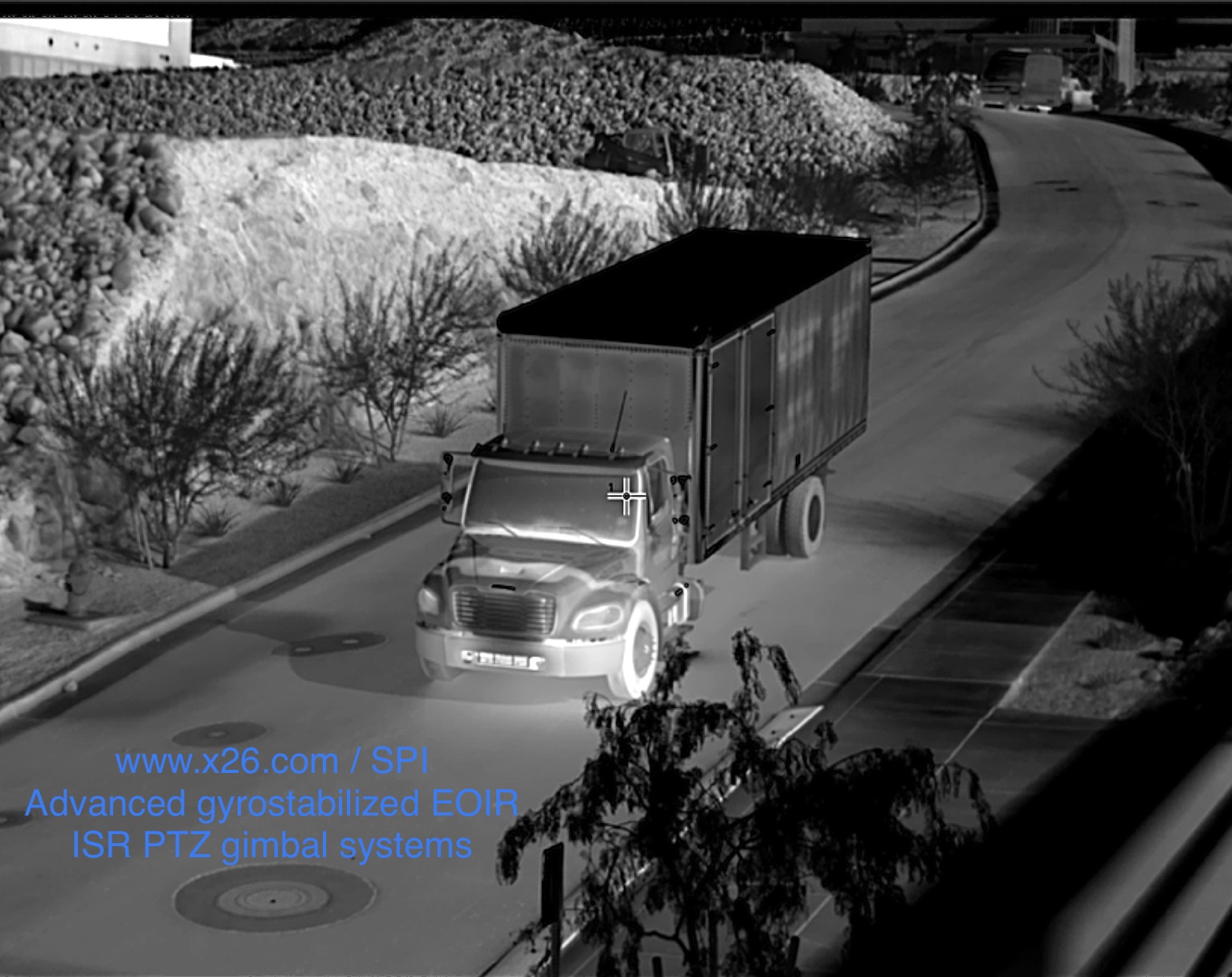
Controlling movement across national borders presents numerous political, economic and technical challenges. While primary responsibility for Long Range FLIR thermal imaging/CCTV EOIR PTZ border control rests with the US Department of Homeland Security (DHS) and Public Safety and Emergency Preparedness Canada (PSEPC), the respective defense departments have both key roles and significant materiel resources with which to support national security objectives. Given the size and in many cases remoteness of North American borders, technical solutions for long range PTZ FLIR thermal imaging/HD CCTV Sensors and pan tilt zoom extreme distance gimbals are necessary to act as multipliers to limited manpower within government enforcement agencies. The FLIR thermal imaging night vision and HD TV Visible PTZ GIMBALS AND TURRET products and technologies to tackle this effort reside not only in the private sector, but in capabilities either under development or already in use by the military. Civil agencies can benefit from leveraging these capabilities if hurdles such as cost, training, interoperability and security can be overcome.The Department of Homeland Security (DHS) is implementing several initiatives toward securing the border, including the Secure Border Initiative (SBI) and the Western Hemisphere Travel Initiative (WHTI). SBI takes a systematic approach to border security by integrating and unifying border security systems, and developing and coordinating programs and policies to secure the border and efficiently enforce customs and immigration laws. The goal of WHTI is to strengthen border security and facilitate entry into the United States for U.S. citizens and legitimate foreign visitors.The potential for danger at borders all over the world is a very real concern as of late with regard to the high risk of terrorism and drug/human trafficking. In areas such as the Southern US border there has been a sharp increase in the number of armed drug and immigrant smugglers that require heightened levels of surveillance. Actionable intelligence needs to be provided to patrols in the field. But technologies providing information to the Border Patrol personnel need to address a very specific set of challenges: Long Range FLIR Thermal imaging Pan Tilt Zoom PTZ Surveillance equipment must be able to endure consistent exposure to harsh environments in remote locations. In addition, Detection and Tracking technologies have to face highly cluttered environments, at times filled with tumbleweeds and a wide range of animals, the geography itself can also present its own intricacies as line of sight is not always available as rugged hills can be part of the landscape’s fabric. Challenges specific to border surveillance include: Wide-area perimeter surveillance of at times rural and mountainous regions with wildlife clutter Survey and automatic detection of a wide range of different threats, including hardly detectable ones such as: UAVs, RHIBs, crawlers, swimmers etc. Equipment must be able to withstand harsh environments in remote locations Provide actionable, real-time intelligence to allow for immediate action by patrols in the field Long Range FKIR OPTZ Pan Tilt Zoom thermal imaging cameras and radar BORDER SURVEILLANCE/SECURITY PLATFORMS Securing national borders has become increasingly difficult. Global deployments call for a wide range of mission capabilities requiring flexible, high-performance multi-sensor systems, installed and operated from a variety of platforms. The most effective intrusion detection systems use multiple technologies to increase the probability of early detection with low false alarm rates under a range of atmospheric and lighting conditions. Closed circuit television (CCTV), infrared image cameras, surveillance UAVs, long range radar and laser radar (LIDAR) are often deployed in appropriate combinations. Short, medium, long and ultra long range FLIR Thermal imaging camera platforms integrate a wide variety of sensors – including such systems as tautwire perimeter detection, vibration intrusion detection, electromagnetic intrusion detection, electrostatic field disturbance, electro-optical observation, and even microwave field disturbance detectors. • Perimeter fences – deploy a variety of electronic surveillance technologies for intrusion detection and warning. These ground-based systems are primarily short-range, up to around 500 meters. • Observation towers extend Long Range FLIR Thermal Imager camera surveillance capabilities many tens of kilometers further from a border installation, and provide a platform for ground-based medium-range surveillance. • Mobile surface observation platforms, such as land vehicles as well as maritime vessels, patrol frontier regions and coastal waters, extending the reach of medium-range / and long range Mobile Surveillance system sensors. • Thermal imaging EOIR FLIR Observation aerostats, stationary platforms, generally tethered PTZ FLIR THERMAL IMAGING balloons, allow for extended day/night vision EO/IR ISR observation over wider areas, extending the reach of long range Thermal FLIR Imaging surveillance sensors beyond what can be seen from an observation tower. Gyro Stabilizing the platform is recommended for extreme long ranges in order to obtain high resolution images from the sensors.
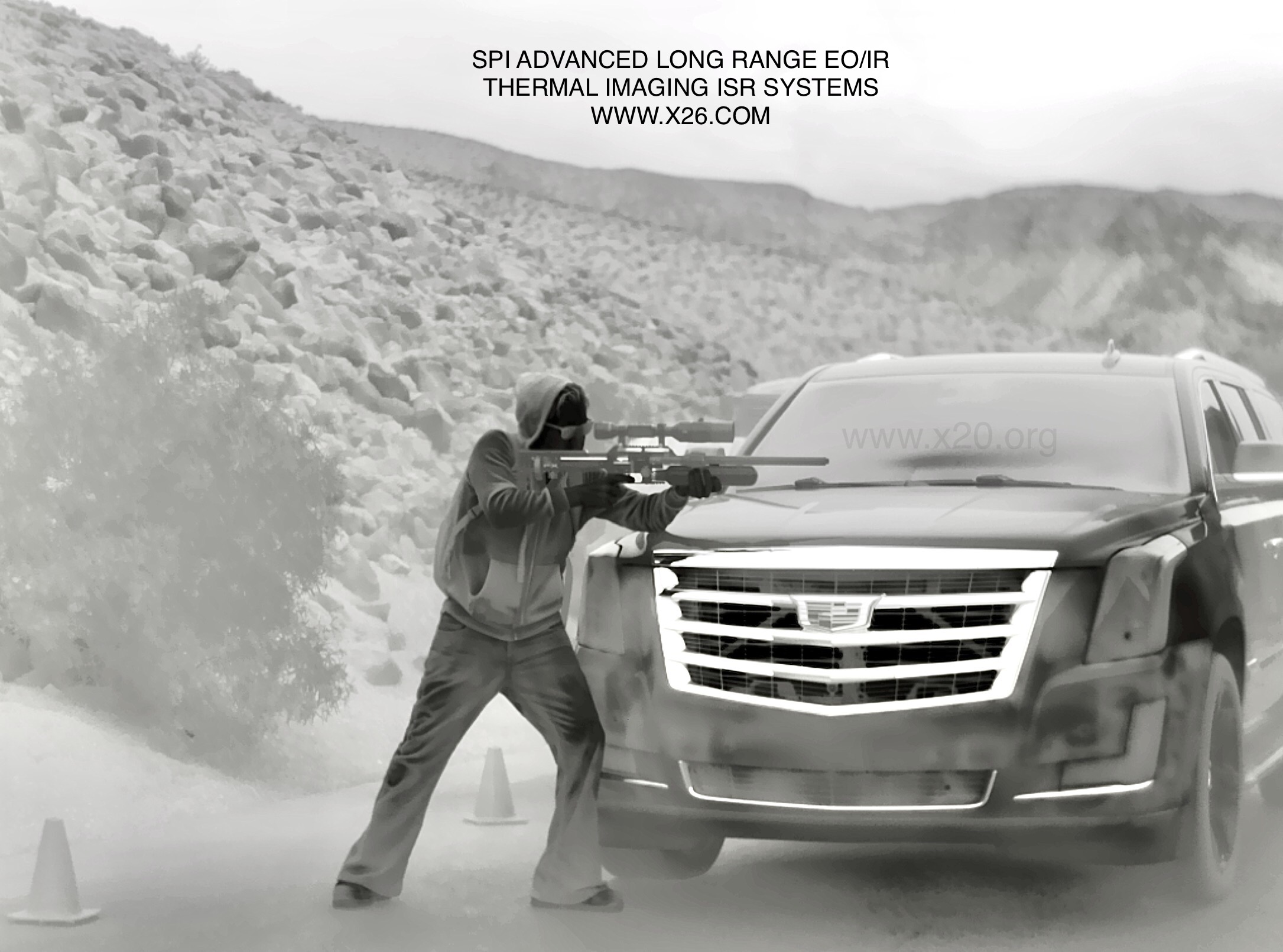
Long range Security surveillance systems are only as effective as their ability to see and warn of intrusions. While today’s video technology has significantly extended the perimeters of detection, many blind spots remain, hindering its success.
Errors in human decision-making, equipment malfunctions and lack of timely data can cripple surveillance operations; and prompt detection
can become uncertain in the dark of night or in adverse weather. Advanced technology however, is helping to close these gaps in surveillance systems. A fully integrated system will incorporate six building blocks that can transform video surveillance into a reliable, all- weather, 24/7, low-cost, automated, remotely operated network.
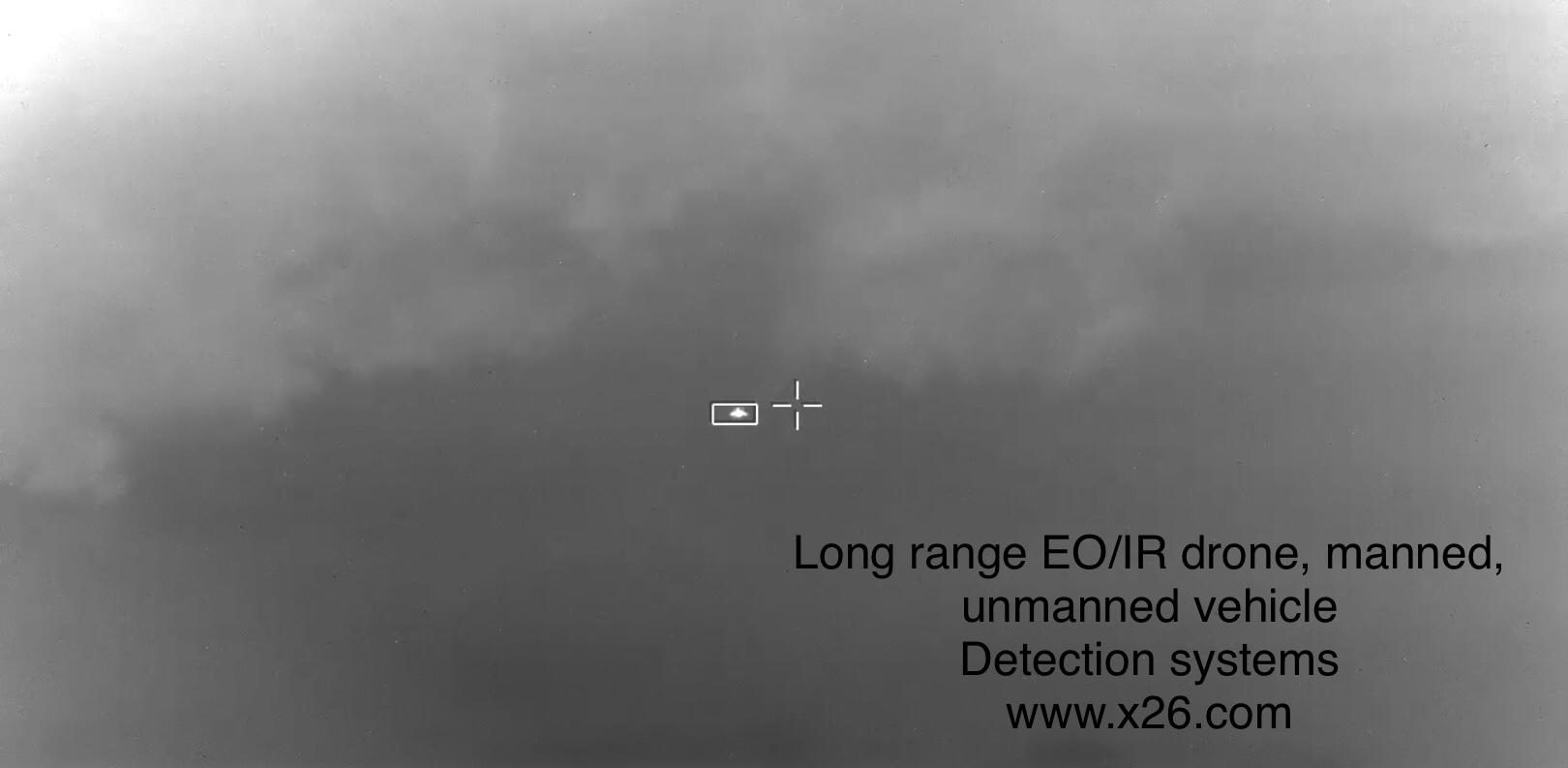
While camera systems are effective for visual assessment over wide areas, at night their impact can drop dramatically. Active illumination systems operate only over
limited areas, making detection
at a distance unlikely. Long range Thermal cameras, on the other hand, can be effective day and night because they produce sharp video images from infrared (heat) rays that are emitted by people, structures and objects, whatever the ambient temperature may be. As a result, they can detect potential security threats from great distances, day and night, in areas with no visible light and in conditions of dust, haze, light fog or smoke. The latest of these devices are built on an
IP platform to allow for networking with other security and surveillance equipment. Due to advances
in technology, long range passive thermal detection is becoming increasingly affordable and offers higher performance, such that it must be considered in the mix of affordable, reliable and practical technologies for surveillance imaging. Once video surveillance alerts an operator to a possible threat, many questions
may arise. Where is the object? Where is the object in relation to other detected objects? Where did the object originate, and where is it going? How can the object be followed as it leaves the camera’s field of view? The change is underway for long range thermal imaging ‘flir’ video surveillance cameras to be designed to make intelligent video analytic decisions at the camera sensor itself, or what is referred to as “at the edge”. Internet protocol (IP) cameras with intelligent video analytics at the edge provide answers to many of these questions. Adding tamper- proof capability to these “sensors at the edge” creates a powerful force multiplier for the ability of any system to remotely assess threats.

